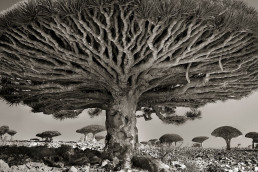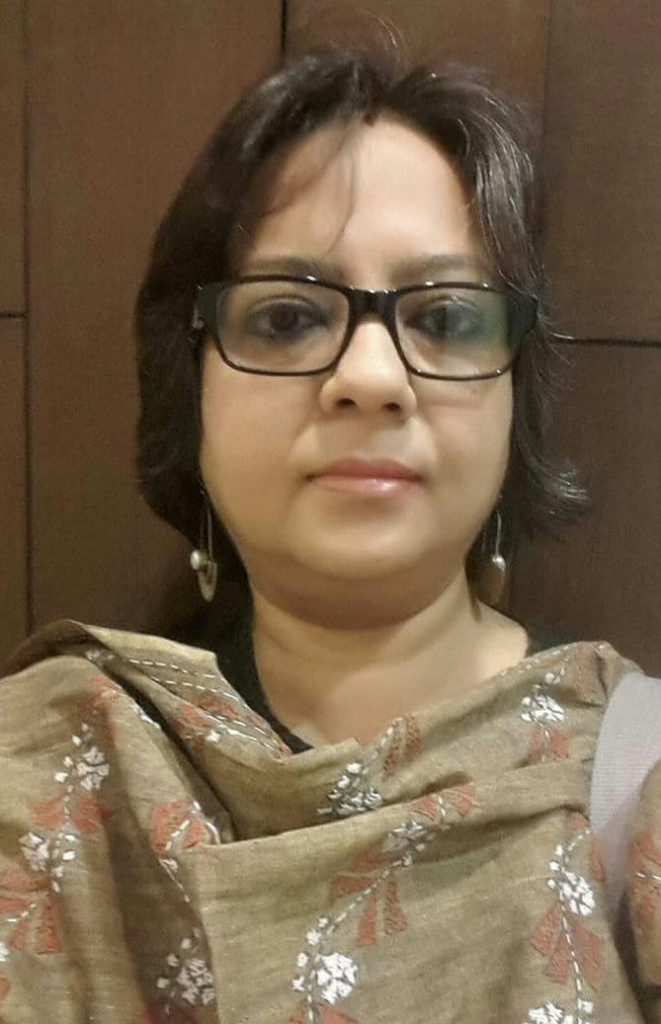Reimagining a Regenerative Future — Part 1
Navigating radical uncertainty with radical tenderness…

MATURITY is the ability to live fully and equally in multiple contexts; most especially, the ability, despite our grief and losses, to courageously inhabit the past, the present and the future all at once. The wisdom that comes from maturity is recognized through a disciplined refusal to choose between or isolate three powerful dynamics that form human identity: what has happened, what is happening now and what is about to occur.
~Anais Nin (quoted in brainpickings; italics mine)
Never has there been the need to inhabit multiple contexts more than now — “to courageously inhabit the past, the present and the future”. The start of 2020 presaged chaos, collapse, and terror. In January, the megafires of Australia. In February, megafloods. In March, a deadly pandemic. No respite! The machineries of the world has collapsed and laid bare their fractures and fissures in the face of Covid-19 highlighting the appalling inequality, failed governments, spurious economic policies, failing and flailing nation-states, the exploitation, extortion, and extraction that runs the economy, the dehumanization of humans, and utter disregard for this fragile and beautiful planet.
2021 began with vaccines, which could and should have brought nations together with humanity prevailing over all surface differences to face a global challenge. Instead this degenerated into “vaccine apartheid” with wealthy nations like the USA and Britain opposing India and South Africa’s bid to waive Covid-19 vaccine patents. Vaccine hoarding is another game being played: “… though rich nations represent just 14% of the world’s population, they have bought up 53% of the most promising vaccines so far.” Rich countries hoarding Covid vaccines, says People’s Vaccine Alliance. What could have been a defining moment of compassion, connection, and care in the civilizational narrative turned into repulsive power play, politics, profiteering, and a show of brute strength and shocking neocolonial racism.
The dual traps of neocolonialism and neoliberal capitalism blinded leaders and nations to the most crucial lesson that the pandemic taught us. The infallible truth of our inextricable interconnectedness and interdependence with all sentient beings and this Planet. We cannot survive, let alone thrive, as long as a vast majority of the planet remains oppressed, disregarded, and disavowed. “All the catastrophes we face now are byproducts of a feeble, decrepit industrial-capitalist economy. All that is what capitalism really is — exploitation of you, me, the planet, life on it, democracy, and the future, by organizations wealthier than countries, with legal superpowers, whose only goal is to maximize profit, at any cost. How are we to cohere, prosper, survive, endure — grow?” ~ Umair Haque. One would have thought that the pandemic must have driven this lesson home when a microscopic zoonotic virus jumped species and ravaged the world. Apparently not!
The pandemic, nonetheless, was a point of discontinuity — a rupture in the seams of the already fraying civilizational narrative of universal and never-ending growth and development, the utopia of technology as savior, and the myth of the West leading the rest of the world on an onward march of progress. There have been many moments of disruption, but none spanned the globe with such a visible and terrifying impact bringing mighty nation-states to their knees and halting the juggernaut of the ostensibly unstoppable machinery of global economy. This rift threw up with blinding clarity the brokenness that lay hidden just beneath the surfaces of society, politics, and other machineries and machinations of civilization. The simultaneous collapse of essential systems across the globe — from healthcare and economics to politics and education — are visible evidence of an obsolescing and degenerating civilizational narrative. The depravity and decadence underlying the world order revealed themselves in all their shame.
2020 became an inflection point in the trajectory of the Anthropocene catapulting us directly into the liminal space of radical uncertainty for which we had no script. A space without stories to anchor us, a space of incongruities and paradoxes, of death and decay — a seemingly yawning chasm of obscurity. We were left grappling to make sense. In this interregnum, the questions we ask are crucial acting as compasses in an essentially map-less territory of radical uncertainty.
What if we could navigate radical uncertainty with fierce compassion and radical tenderness — for ourselves, for each other, for all sentient beings, for this beautiful, fragile Planet?
What would those choices and decisions made from a place of fierce compassion look like?
How would we envision our collective future from a place of radical tenderness?
In a 2015 Manifesto called Radical Tenderness, Dani d’Emilia and Daniel B. Chávez writes: “radical tenderness is to not collapse in the face of our contradictions… is to have peripheral vision; to believe in what cannot be seen.” The words are hauntingly evocative, prophetic, and profound. The chaos and conflicts threatening us daily are overwhelming, and it is easy to sink into despair and a desperate yearning for some semblance of stability and certainty. The pandemic can be a portal towards a regenerative future inviting us to hospice what no longer works, and to midwife the new. If only we can “believe in what cannot be seen”.
How can we collectively hold space for the new shoots to emerge from the debris and decay of this collapsing world?
How can we be stewards of those narratives that have been disowned and denied for centuries — those unheard, unseen, unacknowledged ways of being, seeing, sensing, and knowing which can be our salvation towards a regenerative future?
We know in our guts that there is no going back to the “old normal” if we want to survive as a species on this Planet we call home. We can also feel the quiet, ephemeral presence of the more beautiful world our hearts know is possible. “Another world is not only possible, she is on her way. On a quiet day, I can hear her breathing,” wrote Arundhati Roy.
The hegemonic narrative of growth, development, and modernity imposed through the imperial project of colonization — Eurocentric and Western — has not only been running the show for centuries but has sterilized and homogenized all other ways of being and relating on this planet. Donna Haraway called it “playing the god trick”. Now this “god trick” has spectacularly failed as it must. The ineffectuality of this monocultural worldview in a diverse and pluricultural planet is starkly visible.
By excluding, delegitimizing, and disavowing myriad ways of being, seeing, learning, and knowing that did not subscribe or partake in the mainstream, hegemonic, civilizational narrative, we failed to make sense of an inconceivably diverse world. The arrogance of this primarily Western cosmology and ontology being the only meaning-making device available to humanity is astounding in its presumption.
The pandemic is clearly an inflection point. The breakdown of the old order and its edifices are asking us to slow down, to connect with our inner wisdom, to lean into this liminal space of uncertainty and ambiguity, to widen our peripheral vision, and listen to Earth’s invitation to co-create a thriving, flourishing Planet — “a world where many worlds fit”. And maybe, just maybe — we will catch a glimpse of the shoots of the possible futures amidst the debris and decay of the dying.
Let us slow down and listen to the unheard, unnoticed, unappreciated voices and narratives signaling to us from the peripheries, from the edges of “civilization”. Voices and stories that have for centuries been marginalized, demonized, invisibilized — the oppressed, brutalized, and systematically persecuted voices of the human and the more-than-human. The sidelining was part of the project of colonization resulting in immeasurable loss, disconnection, and untethering for millions in the Global South. Global South is not a geographical location but a metaphorical identity that enfolds the unseen and the unheard, the disowned and the disavowed, the delegitimized, invisibilized, and demonized billions. Global South exists in the peripheries and margins everywhere. We become aware of them in movements like #BlackLivesMatter, #IndiaFarmersProtest, and many other local movements of dissidence and resistance that fly under the radar, are never reported, often brutally quelled — in short, effectively and methodically made invisible.
Why is it crucial to integrate the unheard, unseen, unfamiliar narratives into the new civilizational narrative of a regenerative future?
What is the essence of a world that contains multitudes of narratives — a world where many worlds fit?
How do we reimagine a regenerative future — a world where many worlds fit?
What are the founding principles and values of a Pluriverse?
When we acknowledge with humility that we can never know it all — that our knowledge will always be situated, contextual, and partial stemming from the land and its culture can we step into the emergent space of radical uncertainty with hope and humility. What we can do is listen with fierce compassion and co-create containers for fearless dialogues of possibilities.
Dialogues offer us opportunities to intertwine and interweave the myriad ways of being, seeing, and knowing. And dialogues also save us from the dangers of a single story. Dialogues offer us spaces for co-sensing and listening to each other.
~TEDx, The Story of the Global South
In the next part of the post, I explore the concepts of Pluriverse, and why is this necessary to shift the civilizational meta-narrative to one that is inclusive, compassionate, pluri-cultural, and regenerative. None of us have the answer, but we can collectively re-imagine a regenerative future by coming together in fearless dialogues — dialogues revolving around our hurts, our hopes, and our healings.
Article originally published here in The Age of Emergence
Sahana Chattopadhyay —Sahana Chattopadhyay is a global Speaker, Writer, Master Facilitator, Organization Development Consultant, and Coach. She works at the intersection of Complexity, Human Potential, Organizational Transformation, Systems Thinking, and Emergence. Her passion is to enable organizations to develop the capacities, skills, and mindsets to become “thrivable” in the face of uncertainty and ambiguityr, writer, facilitator, and story-seeker. (https://linktr.ee/sahana2802)
I am a part of the Possible Futures collective. I deeply acknowledge the many fearless dialogues here that have helped me shape my thoughts and birthed new ones.

PLEASE DONATE to help Network Weaver continue in it’s mission to offer free support and resources to networks worldwide.

